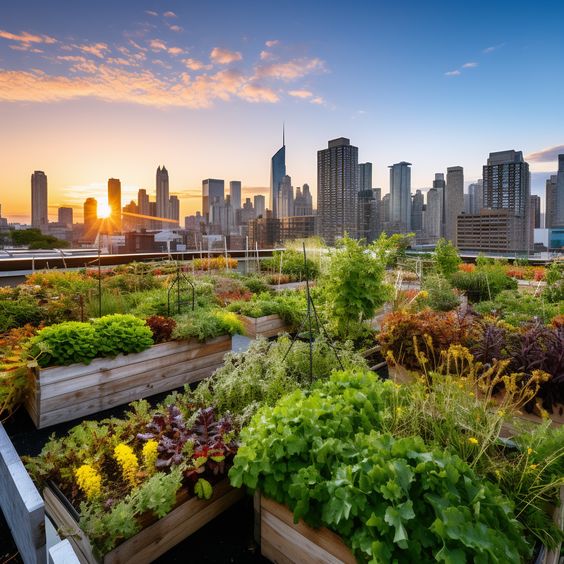Introduction
Imagine stepping out your back door and plucking fresh, juicy tomatoes for your salad or harvesting fragrant herbs for your dinner. That's the beauty of urban farming—bringing the farm-to-table concept right to your doorstep, no matter where you live in the city.

Urban farming is more than just a trend; it's a movement towards sustainable living, healthy eating, and reconnecting with nature. Whether you have a spacious backyard, a sunny balcony, or just a windowsill, there are endless possibilities to cultivate your own little green oasis amidst the concrete jungle.
Getting Started with Urban Farming
The best part? You don't need to be an expert gardener to get started. Urban farming is for everyone. Let's explore some practical steps to embark on your urban farming journey:
1. Assess Your Space and Sunlight:
Before you grab your gardening gloves, take a good look at the space you have available. How much sunlight does it receive throughout the day? Different plants have different sunlight requirements. Leafy greens, for example, can tolerate some shade, while tomatoes and peppers thrive in full sun.
2. Choose Your Farming Method:
-
Container Gardening: Ideal for limited spaces like balconies and patios, container gardening allows you to grow a variety of plants in pots, raised beds, or even vertical gardens.
-
Vertical Gardening: Maximize your vertical space by growing plants upwards on walls, fences, or trellises. This method is perfect for vining plants like cucumbers, beans, and certain herbs.
-
Hydroponics and Aquaponics: These soil-less gardening techniques use water-based nutrient solutions to grow plants. Hydroponics can be a great option for indoor urban farming.
3. Select Your Crops Wisely:
Start with easy-to-grow vegetables like lettuce, spinach, radishes, and herbs. As you gain experience, you can experiment with other varieties. Consider your climate and choose plants that thrive in your region.
4. Soil and Water:
Use high-quality potting mix for container gardening. If you're planting in the ground, amend the soil with compost to improve drainage and fertility. Water your plants regularly, adjusting the frequency based on the weather and the needs of your specific plants.
5. Embrace the Learning Curve:
Urban farming, like any skill, takes time and practice. Don't be discouraged if you encounter challenges along the way. Embrace the learning process, and remember that every mistake is an opportunity to grow as an urban farmer.

.jpg)